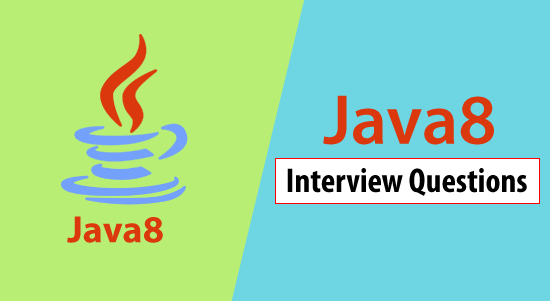Data Science Interview: Data Science technical interviews are pivotal moments that can shape your career in this dynamic field. Preparing for the challenging questions that often arise during these interviews is crucial. In this comprehensive guide, we’ll delve into the top 20 Data Science technical interview questions and provide detailed answers to help you navigate these encounters with confidence. Additionally, we’ll offer external links to valuable resources that can further enhance your preparation and understanding.
Table of Contents
Toggle1. Explain the Difference Between Supervised and Unsupervised Learning.
Supervised learning involves training a model on a labeled dataset, while unsupervised learning works with unlabeled data, focusing on identifying patterns and relationships without predefined outputs.
2. What is the Curse of Dimensionality?
The Curse of Dimensionality refers to the challenges and increased computational requirements that arise as the number of features or dimensions in a dataset grows.
3. Describe the Bias-Variance Tradeoff.
The bias-variance tradeoff represents the delicate balance between a model’s simplicity (bias) and its ability to fit diverse data patterns (variance). Finding the optimal point minimizes prediction errors.
4. What is Feature Engineering?
Feature engineering involves selecting, transforming, or creating features to improve model performance. It plays a crucial role in enhancing the interpretability and predictive power of machine learning models.
5. How Does Regularization Prevent Overfitting?
Regularization adds a penalty term to the model’s loss function, discouraging overly complex models. It helps prevent overfitting by promoting simpler, more generalizable models.
6. Explain the Central Limit Theorem.
The Central Limit Theorem states that, regardless of the original distribution, the sampling distribution of the sample mean will be approximately normally distributed for a sufficiently large sample size.
7. Differentiate Between Batch Gradient Descent and Stochastic Gradient Descent.
Batch Gradient Descent processes the entire dataset in each iteration, while Stochastic Gradient Descent updates the model parameters after processing each individual data point. Mini-batch Gradient Descent combines elements of both approaches.
8. What is Cross-Validation?
Cross-validation involves partitioning a dataset into subsets for training and testing to assess a model’s performance. Common methods include k-fold cross-validation and leave-one-out cross-validation.
9. Explain the Purpose of A/B Testing.
A/B testing compares two versions (A and B) of a webpage or app to determine which performs better. It helps make data-driven decisions by measuring user responses to changes.
https://informationarray.com/2023/11/08/demystifying-data-science-jobs-what-skills-and-qualifications-are-employers-really-seeking/
10. What is the Difference Between Bagging and Boosting?
Bagging (Bootstrap Aggregating) involves training multiple models independently and combining their predictions, while boosting sequentially trains models, with each subsequent model focusing on the mistakes of the previous ones.
11. Discuss the K-Nearest Neighbors Algorithm.
K-Nearest Neighbors is a classification or regression algorithm that assigns a data point the majority class (for classification) or the average value (for regression) of its k nearest neighbors in the feature space.
12. What is the Purpose of Principal Component Analysis (PCA)?
PCA reduces the dimensionality of a dataset by transforming it into a set of linearly uncorrelated variables, called principal components. It is commonly used for feature reduction in high-dimensional datasets.
13. Explain the ROC Curve.
The Receiver Operating Characteristic (ROC) curve illustrates the tradeoff between true positive rate and false positive rate for different thresholds of a binary classification model.
14. Define Precision and Recall.
Precision is the ratio of true positive predictions to the total predicted positives, while recall is the ratio of true positives to the total actual positives. Both metrics are crucial in evaluating classification models.
15. What is the Purpose of Resampling in Machine Learning?
Resampling involves creating new datasets by either oversampling the minority class or undersampling the majority class. It helps address class imbalance issues in classification tasks.
16. Discuss the Use of Natural Language Processing (NLP) in Data Science.
NLP involves using algorithms to analyze, interpret, and generate human language data. It is applied in sentiment analysis, language translation, and chatbot development, among other areas.
https://informationarray.com/2023/11/07/maximize-your-python-coding-efficiency-with-intellij-idea/
17. What is Cross-Entropy Loss?
Cross-entropy loss, or log loss, measures the performance of a classification model whose output is a probability value. It penalizes incorrect predictions, assigning higher penalties for confident and wrong predictions.
18. Explain the Purpose of a Decision Tree.
A decision tree is a flowchart-like structure where each internal node represents a decision based on a feature, each branch represents an outcome, and each leaf node represents a class label. It is a versatile tool for classification and regression tasks.
19. What is Deep Learning?
Deep learning involves training neural networks with multiple layers (deep neural networks) to perform complex tasks such as image recognition, speech recognition, and natural language processing.
20. Discuss Ensemble Learning.
Ensemble learning combines predictions from multiple models to create a stronger, more robust model. Techniques like bagging, boosting, and stacking are commonly used in ensemble learning.
External Links for Further Exploration:
Conclusion:
Mastering Data Science technical interview questions is a key step in securing roles in this competitive field. By understanding these top 20 questions and their answers, you’re better equipped to showcase your knowledge and problem-solving skills. Continuously practice, explore external resources, and stay updated with industry trends to ensure you’re well-prepared for your next Data Science interview. Good luck!









